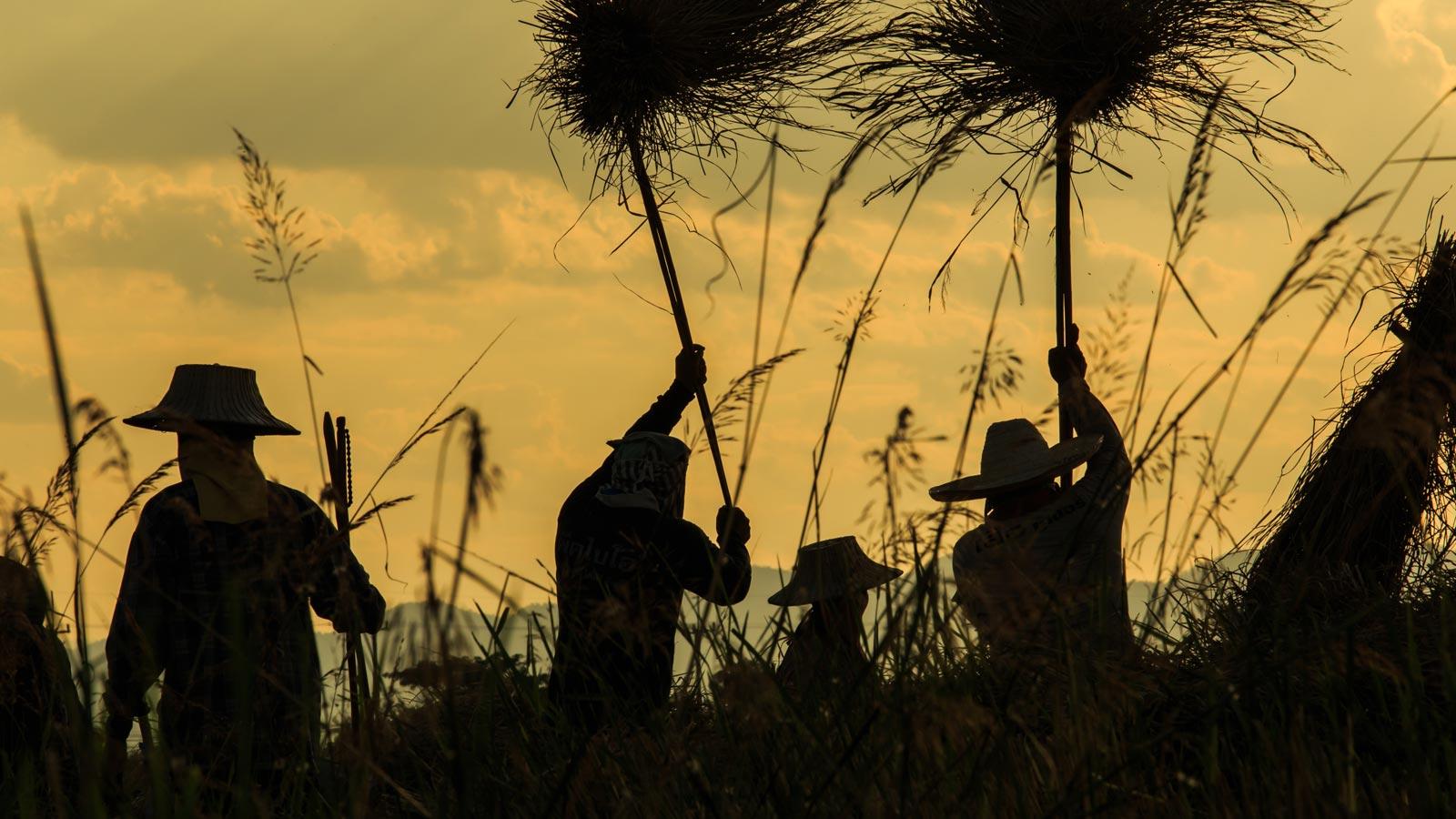How can we be so sure about when crops became domesticated? The answer lies in the grain. At certain archaeological sites in the Fertile Crescent dating back to 10,000 – 14,000 years ago, amongst the shards of pottery and other Neolithic human leftovers, were seeds.
Not any old seeds.
At the base of wheat grains is the rachis – the part of the seed that connects the grain to the plant. Normally, the rachis would be smooth; in the wild it is necessary for a wheat plant to shed its seed when the time is right, a process called “grain shattering”.
These seeds, however, had a jagged rachis – a clear sign of threshing.
This is the first known evidence of true crop domestication. Humans must have discovered some non-dehiscent mutants (naturally occurring plants that didn’t drop their seed) and worked out (or blundered their way through blissfully unaware) that they could grow these, and then choose the right time for threshing.
These plants were now dependent upon people for survival. Fast-forward around 10,000 years, and we’re mutually co-dependent.








